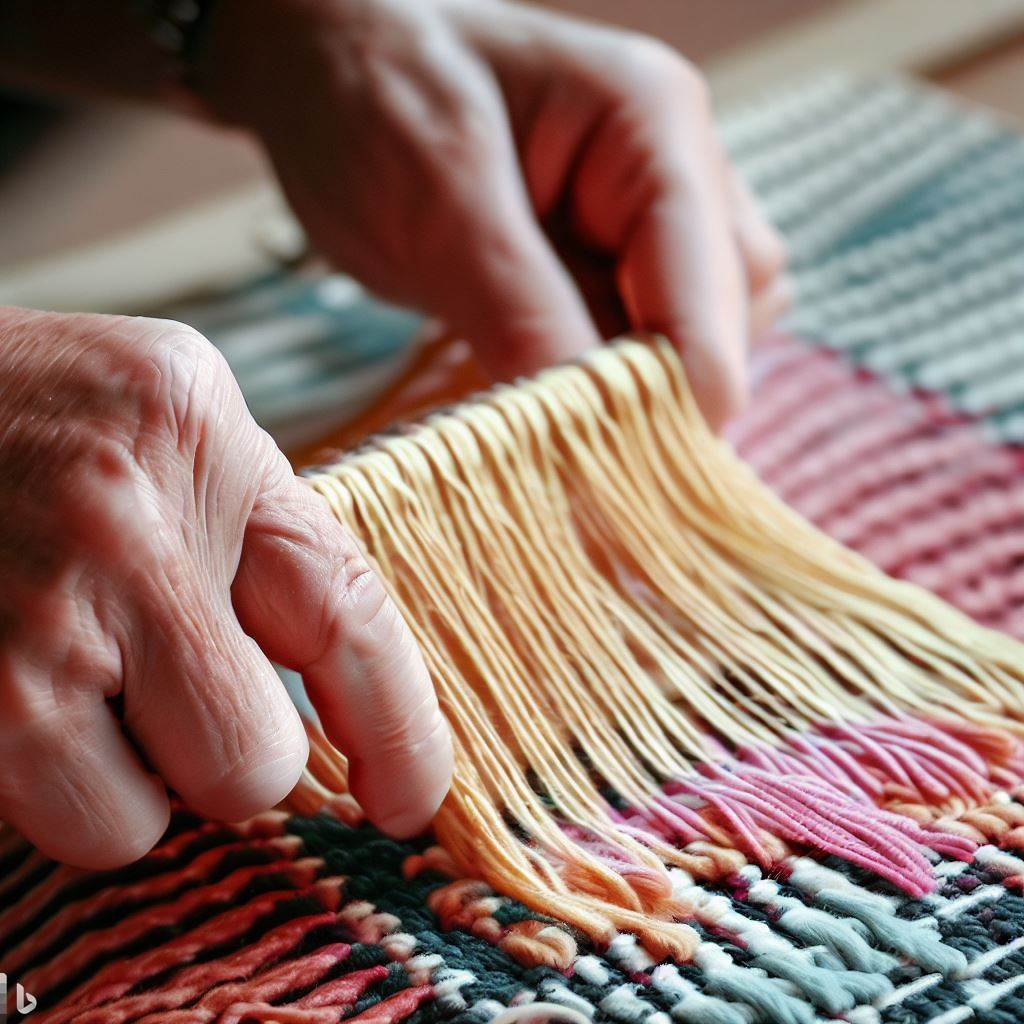Rug Weaving for Beginners: Embark on a Creative Weaving Adventure
Getting Started with Basic Handweaving Supplies
The essential tools for handweaving are happily simple and few. Beginners need not feel intimidated starting out. Many fundamentals get woven using supplies already around the house.
An inexpensive starter loom like a rigid heddle model offers an easy introduction before graduating to a larger floor loom. Handheld wooden tapestry looms allow portable projects.
Cotton and wool yarns from a craft store provide plenty of options for color and texture. Adding natural dyed wool introduces new vibrancy later on. A pair of scissors, tape measure, and storage bags complete the basics.
Beyond materials, patience and curiosity weave the most vital starting supplies. The rest builds from there through practice.
Learning the Rhythms of Weft and Warp
The basic structure of woven fabrics comes from the interlacing of the lengthwise warp threads and the crosswise weft threads. Gaining an intuitive feel for their interplay takes time.
The warp’s even tension gives woven designs their integrity. Loose warps lead to drooping imprecision. Weaving the weft over and under warp threads at precise intervals enables designs to emerge row by row.
Pacing the motions establishes rhythms that help the hands learn. Moving up and down the warp smoothly prevents uneven edges. Keeping weft rows compact without overcrowding takes practice through doing.
Soon the alternating steps become meditative habit. The structure weaves itself as both guide and outcome of the process.
Trying Out Simple Weaving Patterns for Beginners
Plain weave constitutes the most basic interlacing pattern, with each weft thread simply alternating over and under the warp. This straightforward construction helps beginners grasp the essence.
Twill weave patterns like herringbone add visual interest through staggered rows creating subtle diagonal lines. Advancing a step on repeats creates appealing texture.
Trying out plaids and stripes teaches color alternation skills. Gapping warp threads isolates weft blocks. Sampler squares allow experimenting before larger projects.
Playing with various simple patterns illuminates how small steps yield diverse results. Curiosity and patience allow beginners to incrementally up their skills.
Learning to Read and Draft New Weaving Patterns
Reading weaving drafts opens up endless pattern possibilities. These maps use symbols to notate how to interlace warp and weft.
Drafts show the warp threads on vertical axes and weft rows horizontally. Squares represent where they cross. Solid squares mean passing over that warp; empty squares show going under.
This abstraction takes practice to interpret. But soon being able to plan designs beforehand allows moving beyond improvising. Charting original patterns feels deeply satisfying.
Online pattern archives offer boundless inspiration for draft reading practice. Sketching variations on graph paper cements the knowledge. Drafting skills unlock weaving’s full creative potential.
Natural Dyeing as the Perfect Beginner Introduction
Harvesting and hand processing natural dyes offers a fulfilling way for beginners to incorporate new colors into their weavings. The process connects art to nature.
Many common plants like marigolds, turmeric, and walnuts create vibrant dyes easily in a home kitchen with mordants like alum or iron. Experimenting sparks curiosity about chemistry.
Recording quantities and steps taken to get desired hues allows refinement over batches. Comparing mordants shows their subtle impacts. Nature’s palette exceeds expectations.
Starting out dyeing yarn helps learn the fundamentals before attempting to dye completed weavings. And the colors produced make any handwoven creation, simple or complex, shine.
Weaving Without Stress by Enjoying the Process
The meditative ritual of weaving offers beginners respite from daily stresses. The absorbing hands-on process induces relaxation and mindfulness.
Rather than rushing to finish projects, new weavers should savor the journey. Each step presents wonders to notice through slowed down senses. Tuning into motions and textures grants peace.
There is no single right way in weaving. Mistakes simply reveal new paths forward. Curiosity and flexibility allow beginners to shape rewarding journeys suitable for where they are.
Keeping comparison at bay lets the craft stay nurturing. What matters most starting out is cultivating patience and finding joy in the process of making. The rest comes in time.
Joining a Weaving Community for Support and Inspiration
Nothing encourages beginners like belonging to an enthusiastic weaving community. Fellow artists provide guidance, feedback, and encouragement.
Local guilds and artists offer in-person camaraderie and learning. Classes build skills through guided projects. Online groups connect weavers across distances to share experiences and inspiration.
Seeing others at all skill levels reminds beginners that challenges are universal but surmountable. Asking questions and sharing works in progress builds confidence.
Mutual enthusiasm for the craft reenergizes creativity. Over time, informal mentoring progresses artistry further than solitary practice alone. Supportive communities give beginners wings.
Weaving a Path Forward One Thread at a Time
For first-time hand weavers, the learning curve can feel daunting. But the only way forward is step by step, row by row. Each new thread Adds to the foundation.
With basic supplies, curiosity, patience, and joy in the process, beginners can embark upon a lifetime of rewarding discoveries through weaving. Skills compound gradually through practice guided by mentorship and inspiration.
Soon the meditative rituals take on new meaning as hands gain competency. Weaving becomes a treasured creative outlet for self-expression, problem solving, and connection. In time, once beginners themselves mentor new generations of weavers to carry on cherished textile traditions.
